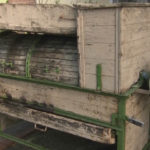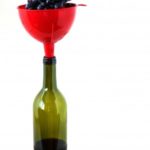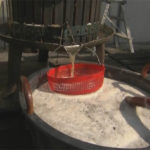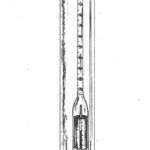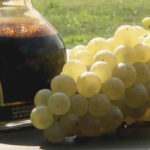Ocena i analiza soku z owoców.
Przystępujemy teraz do przygotowań związanych z wyrobem wina z soku owocowego. Owoce zostały zmiażdżone, a uzyskany z nich sok zebrano do naczynia. Na razie nie ma znaczenia, czy jest to wiadro, czy też beczka do fermentacji. Na jedno tylko trzeba koniecznie zwrócić uwagę: pojemnik musi być przykryty aż do przystąpienia do dalszej obróbki.
Następnym etapem będzie określenie wyglądu i jakości soku. Już teraz bowiem ustala się dalsze postępowanie, aby uzyskać właściwą jakość późniejszego wina. Nie z każdego soku z winogron lub innych owoców powstanie w sposób naturalny dobre wino. Substancje zawarte w soku ulegają zmianie zależnie od rodzaju owoców, stopnia ich dojrzałości i rocznika. Po pięknym lecie sok jest słodki; jednak przy silnym promieniowaniu słonecznym może zawierać zbyt mało kwasów. Jeśli pogoda w okresie wzrostu była zła, wówczas mamy do czynienia z nadmiarem kwasów, co z natury rzeczy niekorzystnie wpływa na aromat i sok nie nadaje się do spożycia, o ile nie podda się go żadnym zabiegom. Zarówno kwasowość, jak i słodycz soku muszą być zrównoważone smakowo, jeśli wino ma być smaczne. Ponadto kwasy i garbniki sprawiają, że wino zachowuje świeżość i trwałość oraz jest odporne na choroby i wady.
Kwaśne jabłka zawierają na przykład zbyt wiele kwasów i za mało cukru, toteż otrzymany z nich napój będzie kwaśny, o małej zawartości alkoholu i-o ile nie skoryguje się go – nie będzie ani smaczny, ani nie będzie nadawał się do dłuższego przechowywania. Słodkie jabłka zawierają dla odmiany mało kwasów i mało garbników, a więc siłą rzeczy napój z nich będzie mdły i bez smaku, jeśli się w nim nie przeprowadzi korekcji.
Kwaśne gruszki mają w sobie dużo garbników, ale mało cukru. Sok fermentuje szybko, ale wytwarza mało alkoholu. Wprawdzie po zakończeniu fermentacji wino szybko się sklaruje, będzie jednak gorzkie i nie będzie się nadawało do przechowywania. Są to kłopoty, które może nam sprawić wino, jeśli zlekceważymy konieczność dokonania analizy i ewentualnej korekcji soku. Mówiąc tu o analizie, nie mam wcale na myśli pracy biochemika, który bada moszcz fachowo i za pomocą niezliczonej ilości przyrządów. Do oceny soku potrzebujemy niewielu środków pomocniczych, możemy się też w pewnej mierze zdać na własny smak, węch i wzrok. Poniższa analiza nie uwzględnia początkowo rodzaju owoców, z jakich powstał moszcz. Rozmaite metody korygowania wina stosuje się dopiero podczas jego sporządzania.
